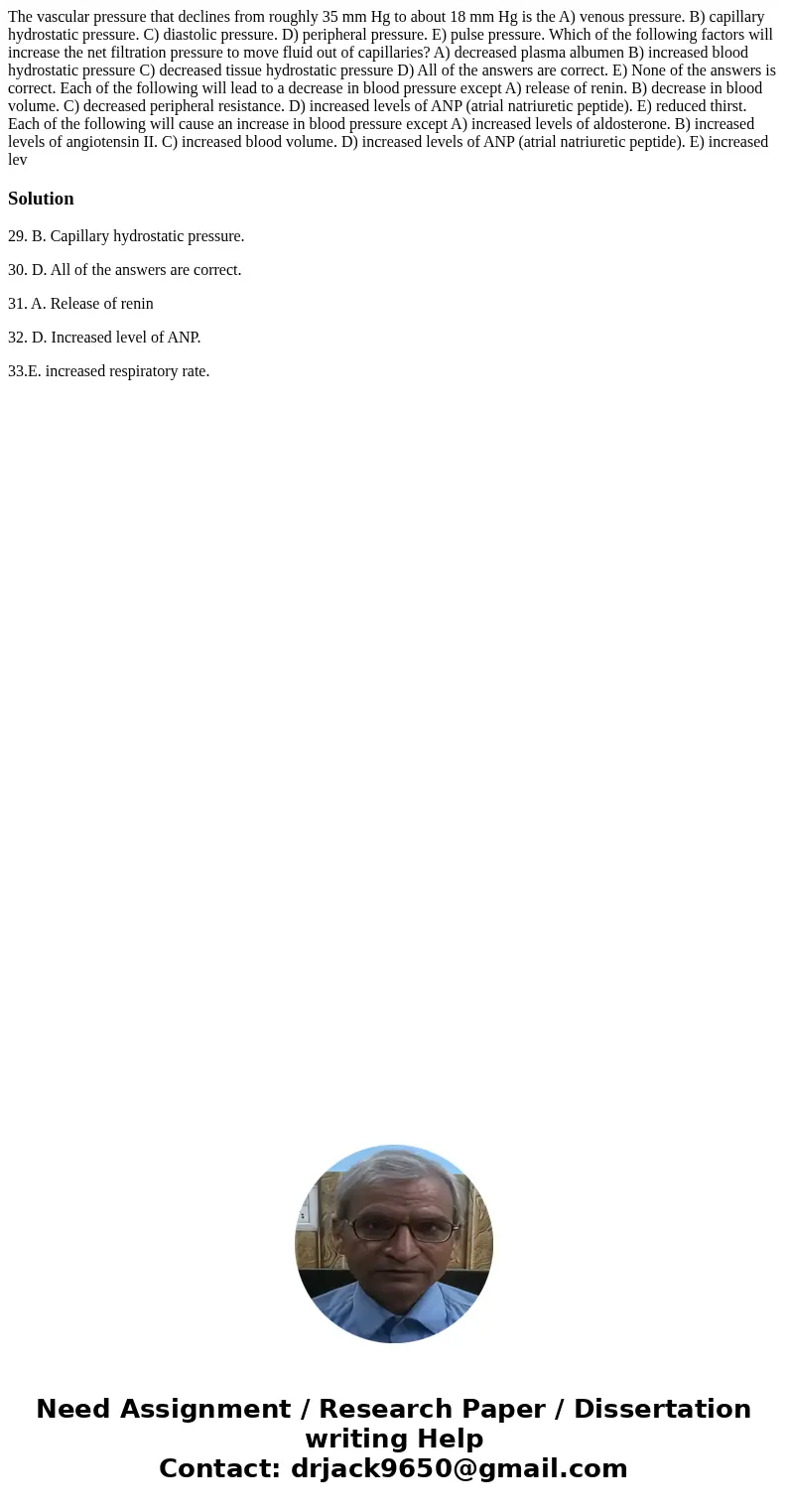The vascular pressure that declines from roughly 35 mm Hg to
The vascular pressure that declines from roughly 35 mm Hg to about 18 mm Hg is the A) venous pressure. B) capillary hydrostatic pressure. C) diastolic pressure. D) peripheral pressure. E) pulse pressure. Which of the following factors will increase the net filtration pressure to move fluid out of capillaries? A) decreased plasma albumen B) increased blood hydrostatic pressure C) decreased tissue hydrostatic pressure D) All of the answers are correct. E) None of the answers is correct. Each of the following will lead to a decrease in blood pressure except A) release of renin. B) decrease in blood volume. C) decreased peripheral resistance. D) increased levels of ANP (atrial natriuretic peptide). E) reduced thirst. Each of the following will cause an increase in blood pressure except A) increased levels of aldosterone. B) increased levels of angiotensin II. C) increased blood volume. D) increased levels of ANP (atrial natriuretic peptide). E) increased lev
Solution
29. B. Capillary hydrostatic pressure.
30. D. All of the answers are correct.
31. A. Release of renin
32. D. Increased level of ANP.
33.E. increased respiratory rate.

 Homework Sourse
Homework Sourse